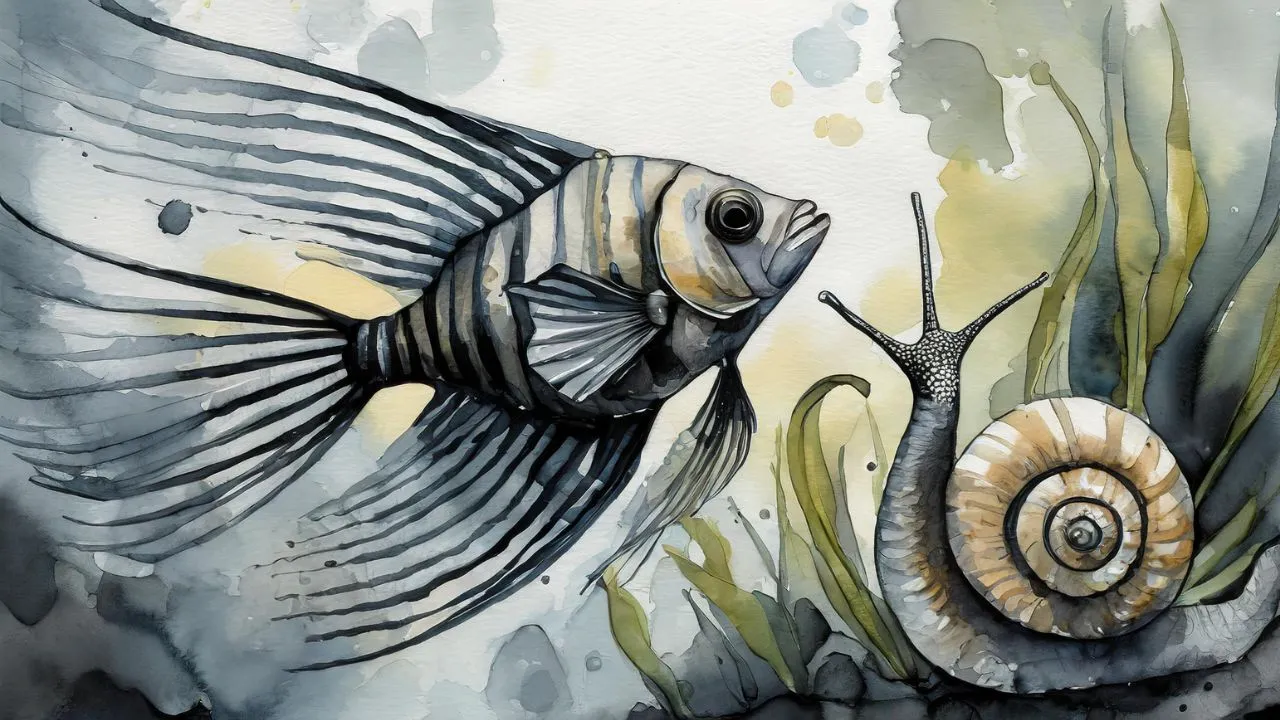When it comes to the fascinating world of aquariums, one question that often arises is, “Do angelfish eat snails?” With their omnivorous appetite and tendency for aggression, it’s natural to question if angelfish eat snails as their next meal.
In this beginner’s guide, we’ll explore everything you need to know about relationship between angelfish and snails. You’ll learn which snail species are prone to predation, what size snails can coexist safely, and how to set up your tank to protect vulnerable snails.
We’ll also discuss the benefits of keeping snails with angelfish and tips to curb any unwanted snail-eating behaviors. By the end, you’ll have the knowledge to confidently add snails to your angelfish tank and enjoy their practical benefits and aesthetic charm. Let’s get started!
Do Angelfish Eat Snails?
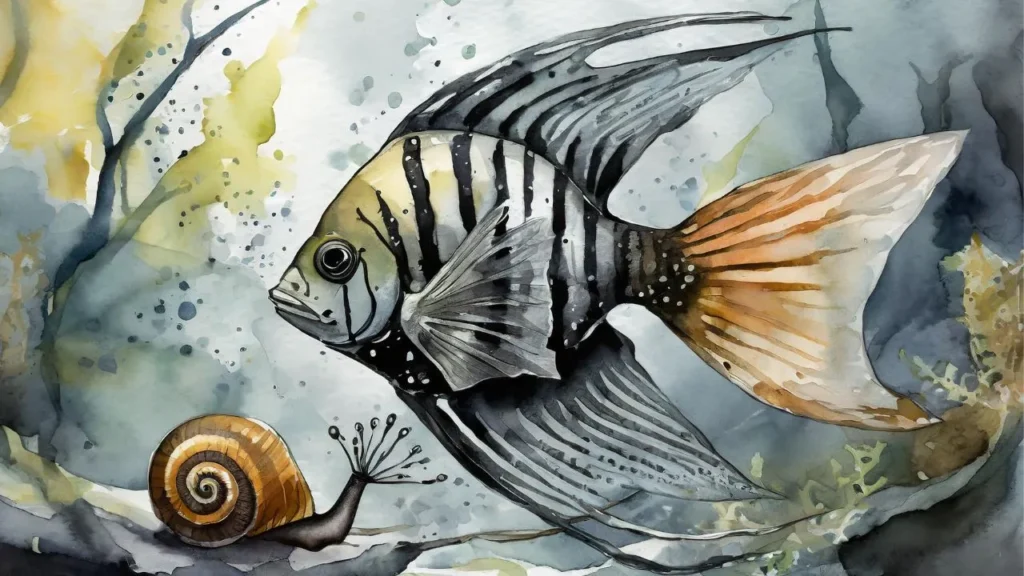
As omnivores, angelfish eat snails and plants both to fulfill their dietary needs. In the wild, angelfish feed on small invertebrates, insect larvae, worms, and zooplankton. They are also known to eat algae, plant debris and fruit that falls into the water.
Given their natural feeding behaviors, angelfish may view small aquatic snails as prey in an aquarium environment. However, some key factors determine if a snail will become food or remain safe:
- Snail Size – Snails under 1/4 inch are more likely to be eaten, while larger varieties over 1 inch are generally safe due to their size.
- Snail Species – Snails with thicker, more whorl-shaped shells and protective trapdoors are harder for angelfish to eat.
- Angelfish Personality – Some angelfish are simply more aggressive and apt to hunt snails than others based on individual personality.
- Tank Setup – Plenty of plants and hiding places allow snails to evade detection from angelfish.
So do angelfish eat snails? answer is: While not all angelfish will view snails as food, they are certainly capable of eating smaller varieties if they choose to. Knowing which snails are vulnerable can help you make the best choices for your tank.
Also Read: Do Angelfish Eat Plants?
Snail Species Less Likely to Be Eaten by Angelfish
When selecting snails for an angelfish tank, bigger is often better in terms of reducing predation risks. Many larger species have robust shells and behaviors that help protect them from curious angelfish. Here are some top safe choices:
Nerite Snails
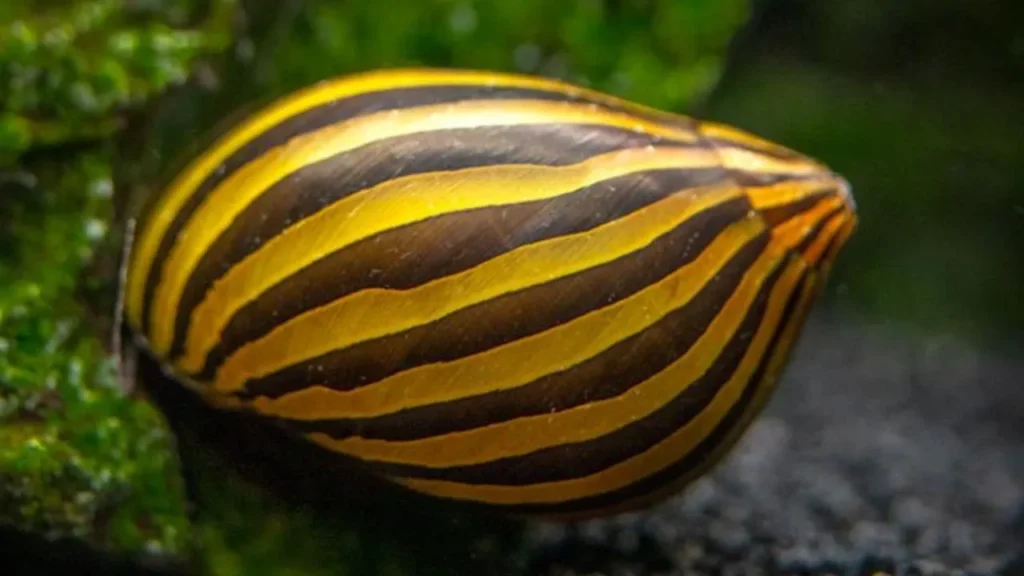
Growing up to an inch in diameter, Nerite snails have thick shells with tightly fitting operculum that seal the shell opening if threatened. Their hearty appetite for algae makes them a practical addition, while their size and durable shells keep them off the menu for all but the most determined angelfish.
Mystery Snails
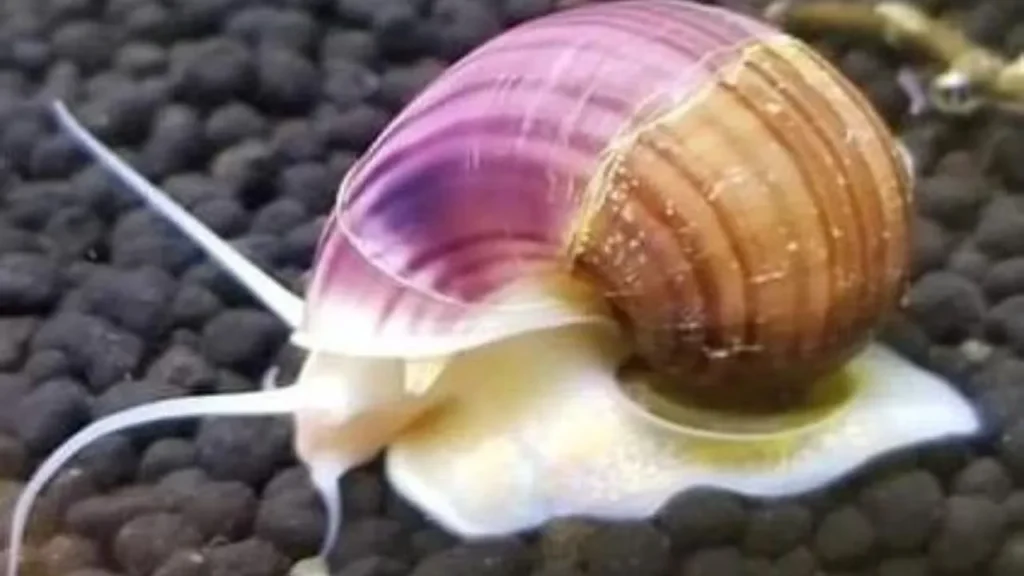
As one of the most popular aquatic snails, the Mystery snails can reach over 2 inches in diameter once fully grown. Their operculum allows rapid sealing of their substantial shell, and their overall size makes them difficult for angelfish to consume. Their bright colors and patterns add beauty to planted tanks when kept with angelfish.
Rabbit Snails
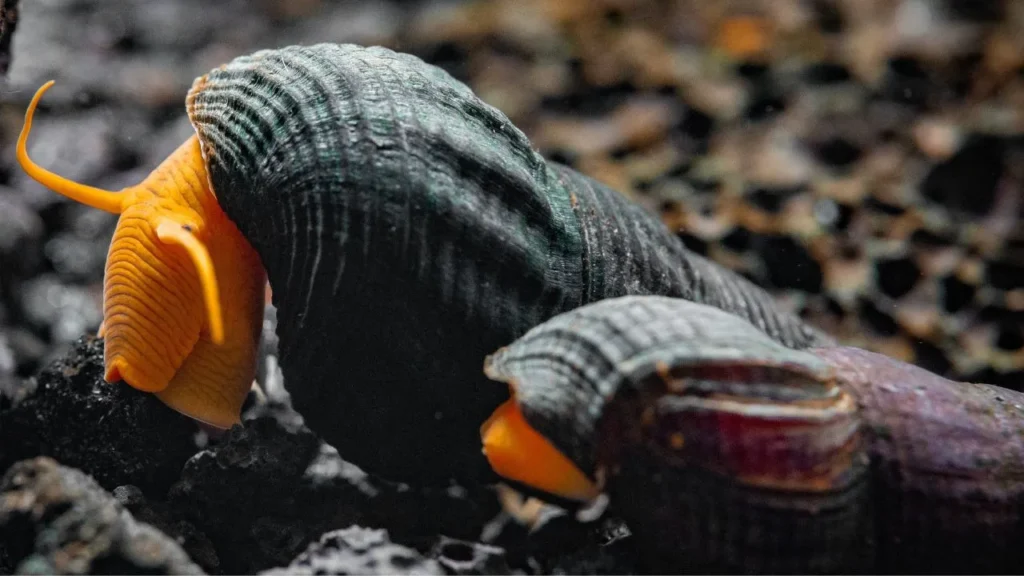
Reaching a length of 3-5 inches at maturity, Rabbit snails are giants compared to species like Bladder snails. Their elongated shells make it nearly impossible for angelfish to prey on them. Their peaceful nature and slow movements allow them to coexist safely with angelfish when provided with sandy substrate to burrow into.
Trumpet Snails
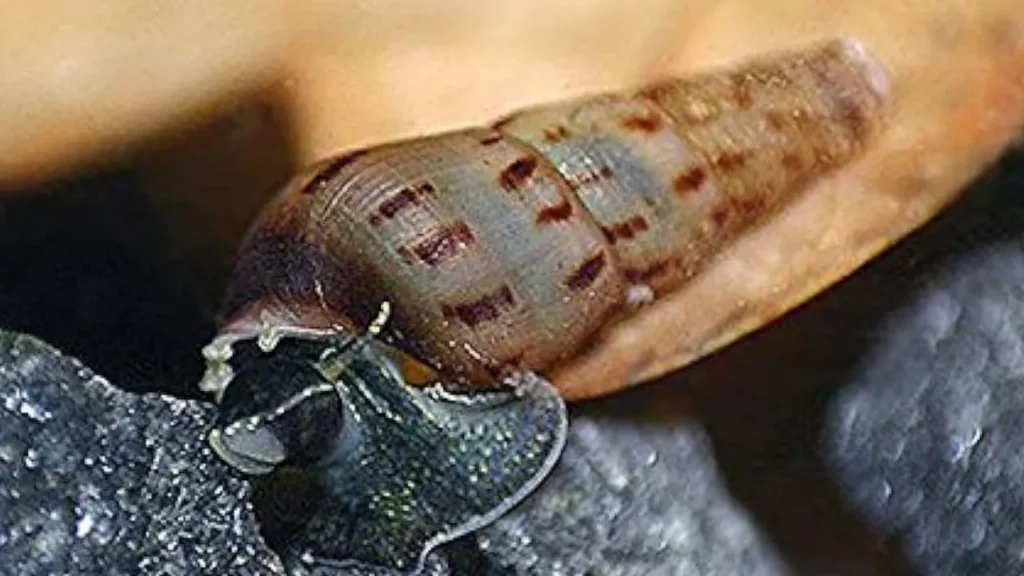
Named for their distinctive cone-shaped shells, Malaysian Trumpet snails can grow over an inch long. Their tendency to bury themselves in the substrate combined with their hardy shells keeps them well protected from angelfish. These efficient detritus eaters help keep tanks clean and thrive in planted aquariums alongside angelfish.
Japanese Trapdoor Snails
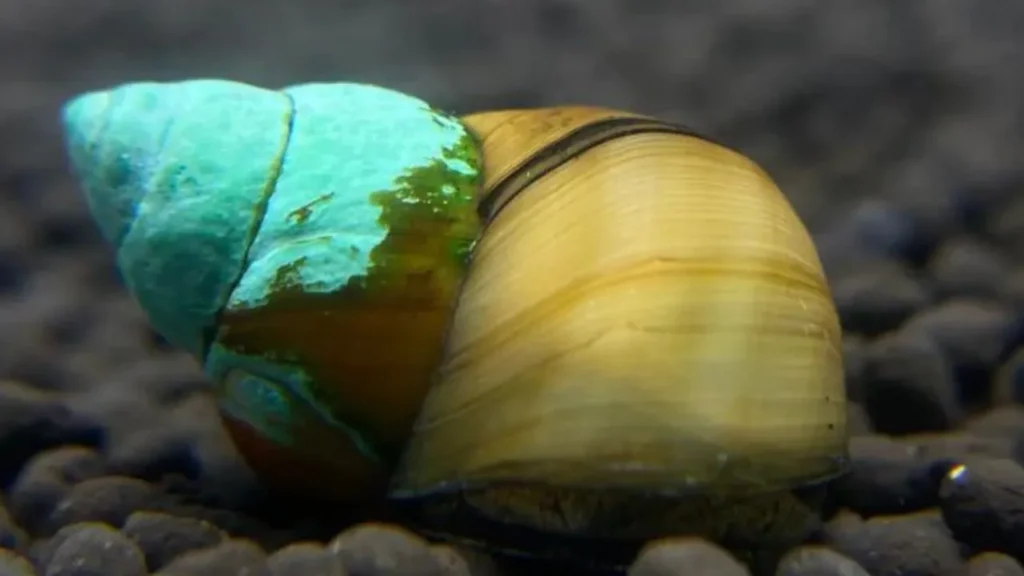
With potential sizes exceeding 2 inches in diameter, Japanese Trapdoor snails are awkward meals for all but the largest angelfish. Their thick operculum seals their shell tightly when threatened, while their heavy shells and peaceful disposition allow harmonious cohabitation with angelfish. Their unique appearance makes them fun additions to planted community tanks.
Small and Delicate Snail Species to Avoid with Angelfish
On the other end of the spectrum, smaller and more delicate snail species face higher risks of being consumed if housed with angelfish. Here are some to keep off your stocking list:
Bladder Snails
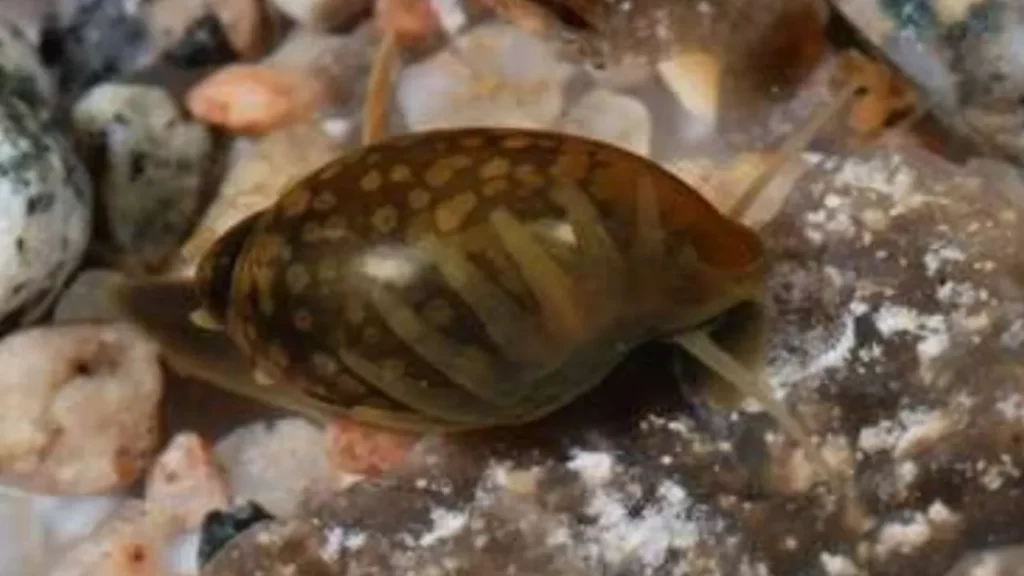
A prime target due to their small size, often under 1/2 inch in diameter, Bladder snails have thinner shells that angelfish can easily crush. These quick-breeding snails zoom around tank surfaces in plain sight, attracting the watchful eyes of hungry angelfish. Keep their population low or house them separately from angelfish to prevent costly losses.
Pond Snails
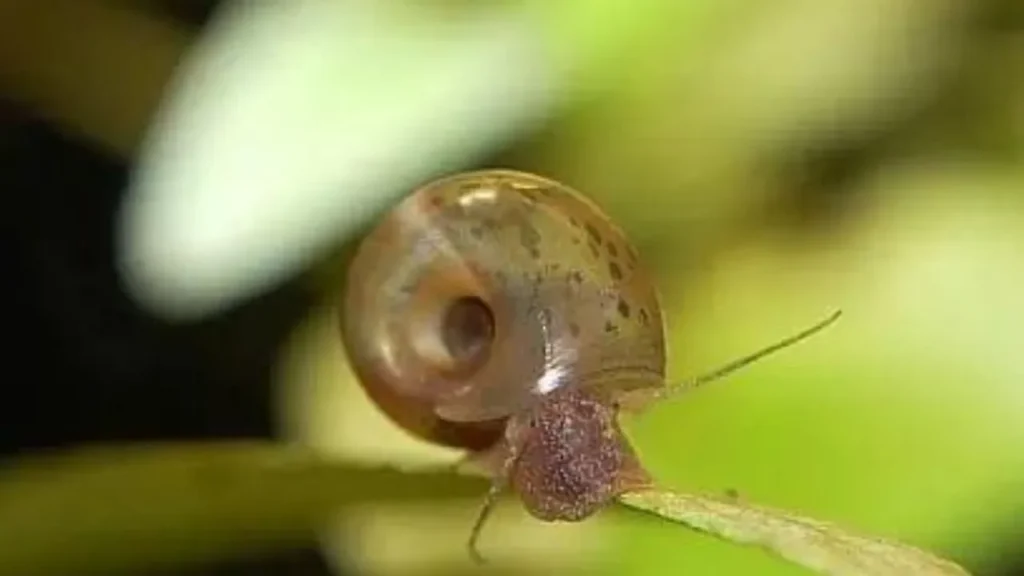
Another prolific breeder, Pond snails tempt angelfish with their easily accessible egg clutches and juveniles. Their shells offer weaker protection, and they multiply rapidly if fed excessively. Though adults may survive, their eggs and baby snails are snack-sized bites for angelfish.
Ramshorn Snails
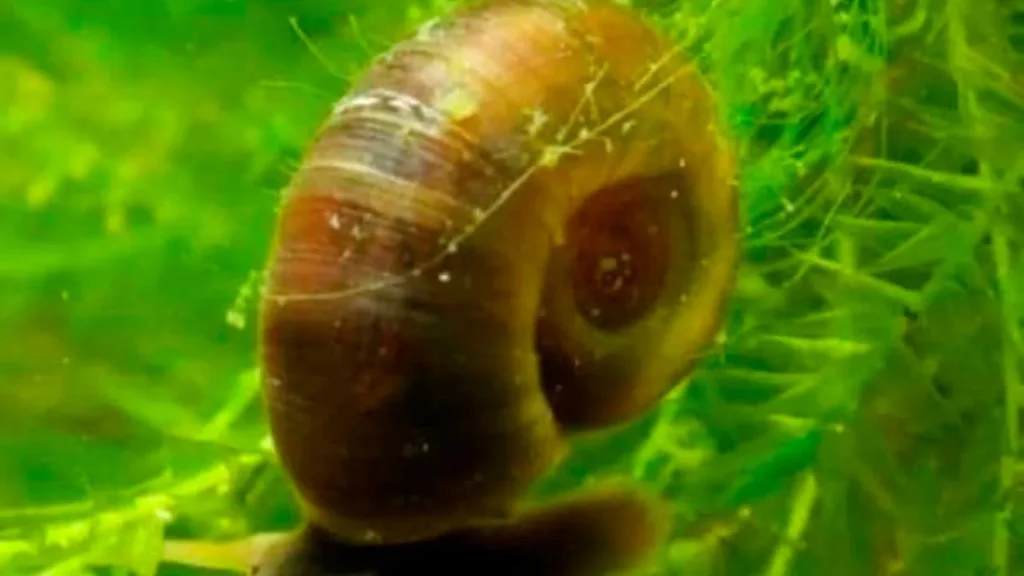
While larger adults remain generally safe, juvenile Ramshorn snails face high predation risks from angelfish. Their shells are still soft in their early weeks, and their small size allows them to be easily slurped up if they fail to find cover. Keep them in dedicated breeding tanks until they mature before introducing them to your angelfish.
Trumpet Snails (Babies)
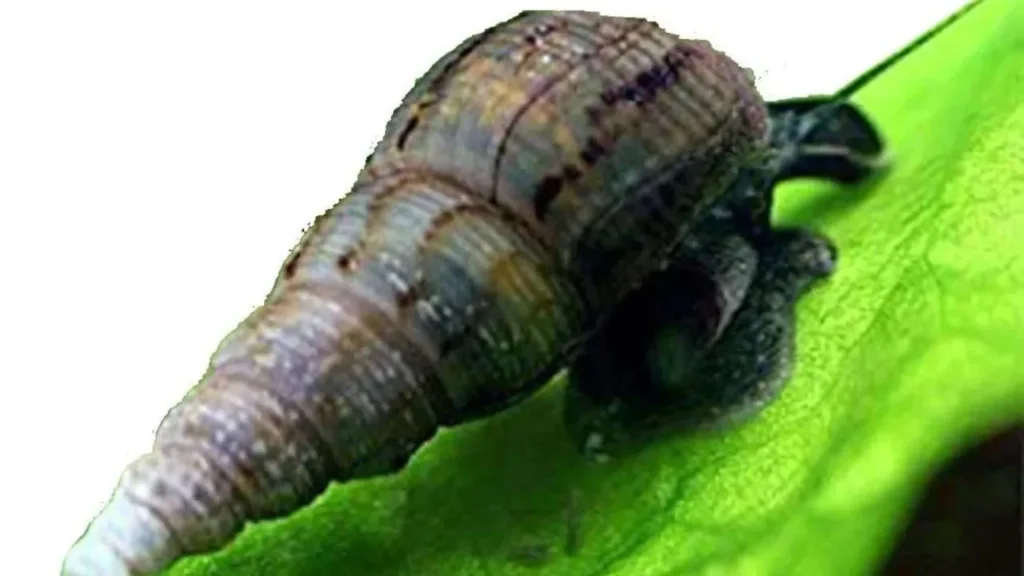
Adult Trumpet snails avoid trouble due to their burrowing habits and hardy shells. However, babies emerge tiny and vulnerable with soft shells. Without parental protection, these newly hatched snails often end up as crunchy caviar for hungry angelfish. Let them grow a bit before mixing them in.
Assassin Snails
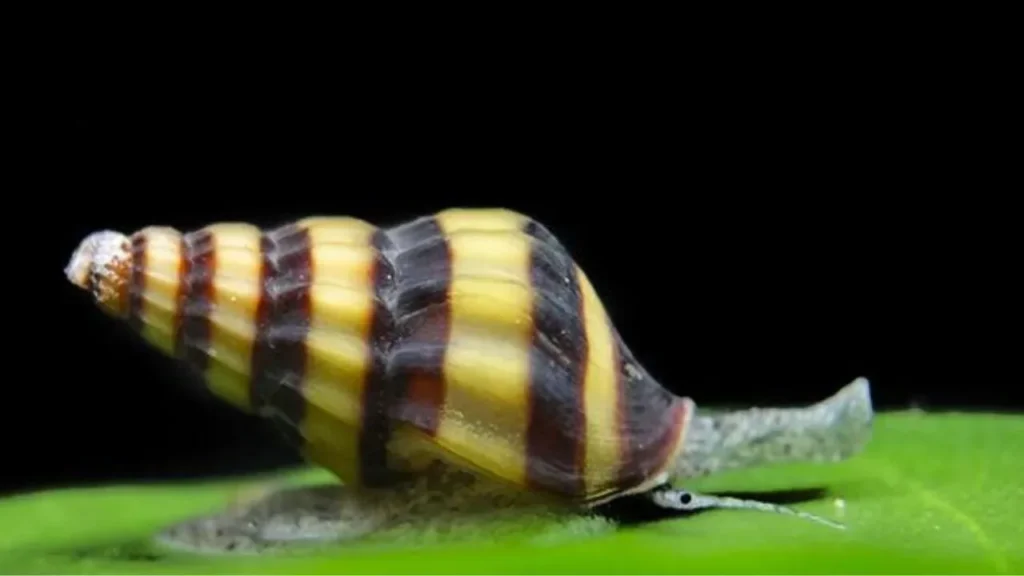
Ironically, while Assassin snails prey on other snails, their young fall victim to angelfish in many cases. With undeveloped shells and limited speed, juvenile Assassin snails struggle to find adequate shelter from angelfish. Allow them time to mature before combining, and provide moss for cover.
Angelfish Eating Snails! Tank Setup To Stop.
Here are some tank setup tips to stop angelfish eating snails:
- If you wish to keep more delicate snail varieties with angelfish, the tank setup plays a key role in their survivability and ability to thrive. Follow these tips:
- Choose Plants Snails Love Such as Anacharis, Hornwort, and Anubias, which provide nooks for climbing and hiding. Floating plants are also great shelters.
- Use Rocks and Driftwood To create barriers and overhangs for snails to cling to, keeping them out of open areas where angelfish patrol.
- Add Leaf Litter Which offers tons of hiding spots for small snails while enriching water quality. Use leaves from aquarium-safe trees like oak and magnolia.
- Keep Sand Substrate Several inches deep for burrowing snails like Trumpets and Rabbit snails. Smooth gravel can injure snail feet and offer less protection.
- Supply Calcium In the form of cuttlebone or calcium supplements to strengthen snail shells against angelfish crushes.
- Dim Lights or Provide Shade To encourage shy snails to come out and feed. Snails are less active in bright light when angelfish are most active.
- Introduce Snail-Safe Tank Mates Such as Otocinclus catfish, Corydoras catfish, Amano shrimp, and Nerite snails which pose no threat to snails but distract angelfish.
- Quarantine New Angelfish And observe their behavior before adding them to established snail tanks. Some individuals are naturally more predatory toward snails than others.
Curb Angelfish Eating Snails Instincts through Proper Feeding
No matter the tank setup, well-fed angelfish are less likely to prowl for live prey like snails. Follow these feeding tips to keep their tummies full and keep angelfish and snails safe together:
- Offer a High-Quality Fish Food With 36-42% minimum protein content. Snails shouldn’t need to provide protein if their regular diet is nutritionally balanced.
- Feed 2-3 Times Per Day Breaking servings into smaller portions prevents gorging and provides a steady nutrient supply, reducing the need to hunt between meals.
- Include Veggie Foods Such as spinach, zucchini, and seaweed which provide filler between protein-based feedings. A diverse diet prevents cravings.
- Supplement with Frozen or Live Foods Like bloodworms, brine shrimp, and daphnia which satisfy predation urges. A few feedings per week can make a difference.
- Soak Foods in Vitamin Supplements to ensure nutritional gaps that may spur foraging are filled. Soaking also softens foods for easier eating.
- Monitor for Leftover Food. Siphon out uneaten portions promptly after feeding to maintain water quality since less snail foraging means more waste
Benefits of Keeping Angelfish and Snails In One Tank.
While certain precautions are needed, there are also many advantages to incorporating angelfish and snails in your aquarium. Here are some of the top benefits snails can provide:
- Algae Control: Snails like Nerites, Trumpets, and Ramshorns are excellent algae eaters, keeping tank walls, decor, and plants free of unsightly algae buildup. This allows you to spend less time scrubbing the tank and more time enjoying it!
- Substrate Aeration: Certain snails like Trumpets and Rabbits sift and burrow through the substrate as they move, preventing compacting and anaerobic pockets that can accumulate toxic hydrogen sulfide gas. Their movements release gas pockets to the surface where they dissipate harmlessly.
- Reduced Fish Waste: Snails are efficient scavengers that break down fish waste like angelfish poop before it can decompose and foul the water. Their appetite for detritus keeps tanks cleaner between maintenance sessions.
- Scientific Interest: Snails exhibit interesting behaviors like climbing, digging, floating, and righting themselves when overturned that can captivate young observers and demonstrate scientific concepts. Their reproductive processes also showcase fascinating biology.
- Natural Appeal: The graceful gliding of snails, shimmery shells, and busy activity provides living interest to a tank in a subtler way than lively fish. The natural beauty and variety they add complements angelfish elegantly.
- Beginner Friendly: Hardy varieties like Nerite, Mystery and Ramshorn snails tolerate a range of water parameters and are easy to care for, making them suitable for beginners seeking hardy tank inhabitants alongside angelfish.
So while certain precautions are needed, the many benefits snails offer make them well worth keeping if you provide them adequate protection and care. Follow the guidance in this article, and you’ll be able to enjoy their charm and practical merits.
Conclusion
In conclusion, angelfish eating snails is not rare. The relationship between angelfish and snails is complex and nuanced. While angelfish may eat certain snail species, there are many snails that possess protective features or are too large for angelfish to consume. Snails can provide essential nutrients for angelfish, but their inclusion in the diet should be balanced with other food sources. Feeding snails to angelfish requires careful consideration of snail size and monitoring of consumption. By implementing preventive measures, it is possible to minimize angelfish predation on snails and maintain a balanced aquarium ecosystem.

